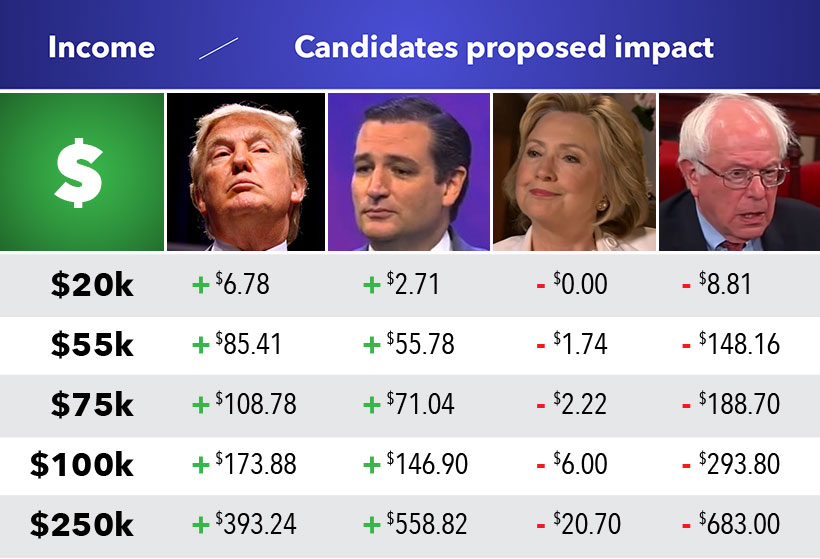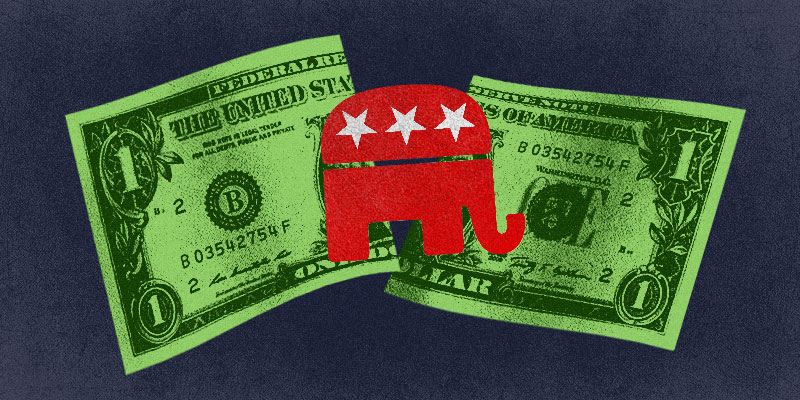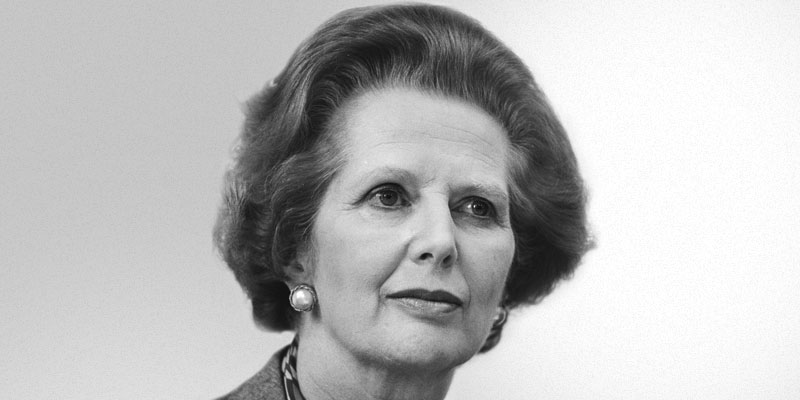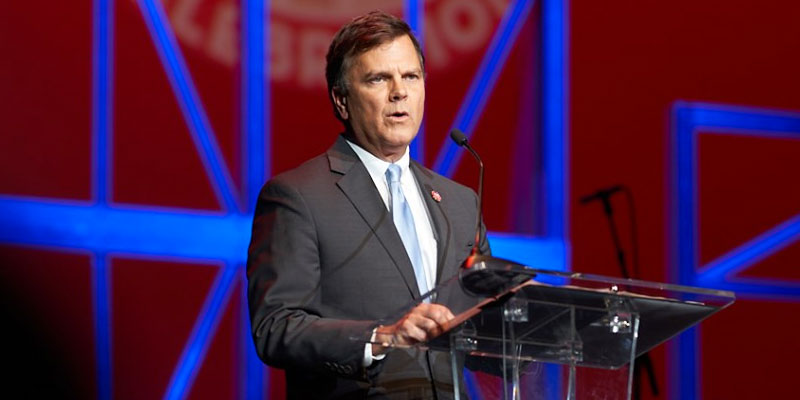
A recent Gallup poll showed that, for once, Republicans and Democrats agree: the economy is the number one issue of the 2016 Presidential Election. Perhaps the most important part of any candidate’s economic platform is his or her tax plan.
The International Business Times ran an analysis of each of the top four candidates’ proposals to find the likely impact on the weekly paychecks of Americans across various income levels. Personal finance editor Lauren Lyons Cole explains how the tax plans of leading presidential candidates could have a “lasting impact on the American economy as well as your future paycheck,” based on research from the nonpartisan Tax Policy Center.
Social-welfare programs facilitated by the federal government, as well as national defense, are all funded by various forms of taxation. Individual income taxes account for the greatest source of revenue for the U.S. government, bringing in nearly $1.4 trillion in 2014. Payroll taxes, which cover Social Security and Medicare, added $1 trillion more to the budget in 2014.
The results reveal some stark differences.
Alabama’s median income is $43,511 as of 2014. For a family in the Yellowhammer State, the median income is $53,764. Under the Obama administration, real median family income has declined and then stagnated over the past seven years.
However, both Trump and Cruz’s plans show a rise in the two brackets that would affect Alabamians the most: the $25,000 and $55,000 group. Clinton and Sanders’ plans both show varying degrees of stagnation or decline.
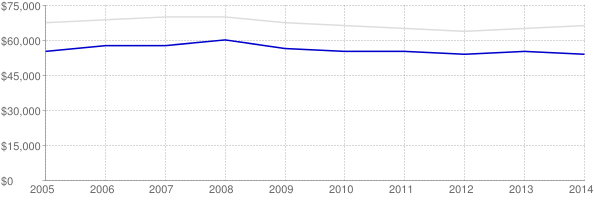
Trump’s policies would increase take-home pay for all Americans by significantly cutting taxes. This is true for all Americans regardless of income level, and would – as all tax cuts do- have a greater impact on the higher than lower brackets.
He proposes a 0 percent rate up to $50,000 for couples, 10 percent up to $100,000, and then only 20 percent up to $300,000.
Because his cuts are not offset by spending decreases, an analysis of Trump’s tax plan by the Tax Policy Center found his tax cuts would result in a federal deficit of $9.5 trillion over the next decade. That’s a significant increase from the projected 2016 federal deficit of $544 billion. This analysis does not, however, take into account the increased economic activity that is likely to result from lower taxes, as has previously been experienced during the Kennedy administration and then later in the Reagan administration, to name a couple. For example, Ronald Reagan cut the top marginal tax rate in half, but government revenues doubled.
In his platform, Trump does not propose reforming entitlements – which make up 66 percent of the budget – and repeatedly says that we “must preserve social security.”
Ted Cruz’s plan is perhaps the most unique in the bunch because it is the only one that proposes a flat income tax. A flat tax is different than our current federal and state progressive models because it sets a standard “flat” rate that everyone across all income groups pays.
Under a Cruz administration, the Texas Senator would slash the 750,000-page tax code for a flat tax rate of 10 percent across all incomes. Like Trump’s plan, Cruz’s shows a significant rise in the top brackets but solid increases across all levels.
The Democratic proposals do not look as promising for taxpayers. Bernie Sanders would raise the federal deficit even more than Trump would and lower real income with his tax plan. The senator’s tax hikes hit everyone, regardless of earnings, and the highest earners will pay over 40 percent. Sanders believes that this is a fair trade off for funding “free” government programs, including college and health care.
Clinton’s plan is the most similar to the status quo under the Obama Administration. The former first lady keeps rates the same for most Americans, but has significant hikes for those in upper-income levels. Clinton’s proposal includes the so-called Buffett tax, which requires taxpayers who earn more than a $1 million each year to pay a minimum of 30 percent in taxes.




